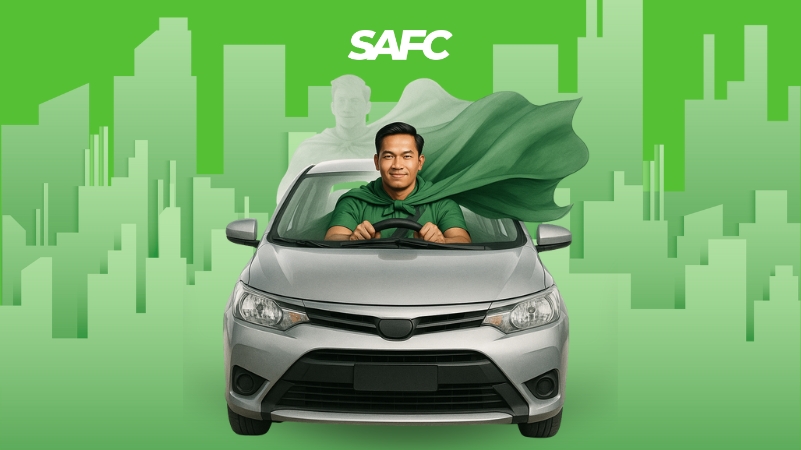So, you’re finally buying a secondhand car. Maybe it’s for those long road trips with your barkada, your growing family, or simply to escape the daily struggle of squeezing into a jeep or bus during rush hour. Whatever the reason, one thing is clear: you don’t want to end up with a brand-new headache instead of a reliable ride.
Buying a used car in the Philippines can feel like an adventure—one filled with surprises, negotiation battles, and the occasional masungit seller who acts like they’re doing you a favor. But don’t worry! Asking the right questions can save you from driving home with a car that’s more high-maintenance than your ex.
Before You Start: Quick Used Car Buying Checklist
Before diving into the key questions, make sure you:
- Set a budget – Consider not just the purchase price but also maintenance,
- insurance, and registration fees.
- Research car models – Look into reliability, fuel efficiency, and common issues.
- Check the market price – Compare listings to avoid overpriced deals.
Verify documents – Make sure the car has a clean title and no unpaid loans.
Once you’ve got these basics covered, here are the top 10 questions you should ask the seller before buying a used car.
1. “Can I have it checked by a mechanic first?“
Let’s be real—cars, like people, have secrets. Some age gracefully, while others have been through things they’d rather not talk about (hello, flood-damaged cars). That’s why one of the most important questions to ask when buying a used car is whether you can bring a mechanic to inspect it. A thorough check-up can reveal hidden issues that might not be obvious at first glance.
🚩 Red Flag: If the seller refuses, walk away. A trustworthy seller should have no problem with a professional check-up.
2. “What’s the actual mileage?“
“Low mileage, sir! Parang bago!” Sounds great—until you check and somehow, a 10-year-old car only has 30,000 km on the odometer. Hmm… either the owner barely used it (unlikely) or the mileage has been “magically” adjusted (tampered).
✅ What to Do: Ask for service records or an LTO Motor Vehicle Inspection Report (MVIR) to verify mileage and maintenance history.
3. “Has this car ever been in an accident? Be honest.“
Imagine thinking you scored a pristine car, only to find out it once had a “near-death experience” on EDSA. That’s why one of the most important questions to ask when buying a used car is about its accident history. Some damages, no matter how well repaired, can still impact safety and performance in the long run.
🔍 Check for:
- Uneven paint or misaligned body panels
- Gaps between doors and the hood
- Any mention of “repaint” or “rehabilitated” in online listings
✅ Pro Tip: If possible, run the plate number through LTO’s Text Vehicle Verification Service to check for past accidents.
4. “How was this car used before?“
Was it a family car that only took trips to the grocery? A company car that changed drivers every week? Or worse—a taxi or ride-sharing vehicle that spent 16 hours a day battling Metro Manila traffic?
🚗 Why It Matters:
- Highway-driven cars = less wear and tear.
- Stop-and-go traffic = more stress on the engine and transmission.
Thinking of buying second-hand instead of brand-new? A used car can be a smarter financial move if you know what to look for. Check out our guide on why a second-hand car is a better choice than a brand-new one here.
5. “Where was this car serviced?“
A car that has been regularly serviced is a safer bet than one that only gets attention when something breaks down. If the seller can name a trusted auto shop (or better yet, show receipts), that’s a good sign.
🚩 Red Flag: If they say, “Ah basta, maayos ‘yan, trust me,” trust yourself to find another car.
6. “What’s the biggest issue this car has had?“
No car is perfect, especially used ones. But there’s a big difference between “Minsan mahina ang aircon” and “Paminsan nawawalan ng preno.”
✅ What to Ask:
- Has the car had major repairs?
- Any recurring issues?
- Has it ever overheated?
🚩 Red Flag: Vague answers or reluctance to discuss past repairs.
7. “Does this car have any outstanding loans?“
This is a financial horror story you don’t want to star in. Some sellers try to offload a car with unpaid loans, leaving the buyer to discover later that the bank still owns it.
✅ What to Do:
- Check the OR/CR (Official Receipt and Certificate of Registration).
- Look for “Encumbered” status—this means it’s still under a loan.
🚩 Red Flag: If the seller can’t show clear ownership documents, don’t proceed.
Want to understand more about car loans? Learn the key differences between Sangla OR/CR and regular car loans to protect yourself from financial risks. Read our guide here.
8. “Can I test drive it?“
If a seller won’t let you test drive the car, that’s a major red flag—like a restaurant refusing to show you what’s on the menu.
✅ During the test drive, check for:
- Unusual engine noises
- Stiff or unresponsive steering
- Braking problems
🚩 Red Flag: The owner will not allow you to take it out yourself.
9. “What’s included in the price?“
Sometimes a really great bargain is just too good a deal until you consider that it lacks a battery, a spare, as well as a working stereo.
✅ Clarify if the price includes:
✔️ Registration renewal fees
✔️ Insurance coverage
✔️ Pending violations or penalties
🚩 Red Flag: If the seller says, “Ikaw na bahala diyan” about important costs.
10. “Is this really your last price?“
Ah, the classic haggling dance—a national sport in the Philippines. Even if the seller insists, “Last price na po ‘yan,” you know there’s probably room for negotiation.
✅ How to Negotiate Smartly:
- Offer 5-10% lower than the asking price.
- Ask for extras (e.g., free change oil or full tank of gas).
🚩 Red Flag: If the price seems too low, it could mean hidden issues.
Bonus: Detecting a Car with Concealed Flood Damage
With regular typhoons in the Philippines, flood-damaged vehicles frequently enter into the second-hand market. Here’s how to spot one:
🚨 Warning Signs of a Flood-Damaged Car:
✔️ Musty or moldy smell inside the cabin
✔️ Water stains on seats, carpets, or trunk
✔️ Rust in unexpected areas (such as on door interiors, on dashboards)
✔️ Electric issues (such as light flicker, sensor failure)
Final Thoughts: Drive Home Grinning, Not in Tears
Buying a used car doesn’t have to feel like a gamble—as long as you ask the right questions. Take your time, inspect the car properly, and don’t be afraid to walk away if something feels off.
🚗 Key Takeaways:
✅ Ask smart questions
✅ Check documents and accident history
✅ Negotiate (nicely!)
✅ Trust your gut
Good luck, future car owner!




